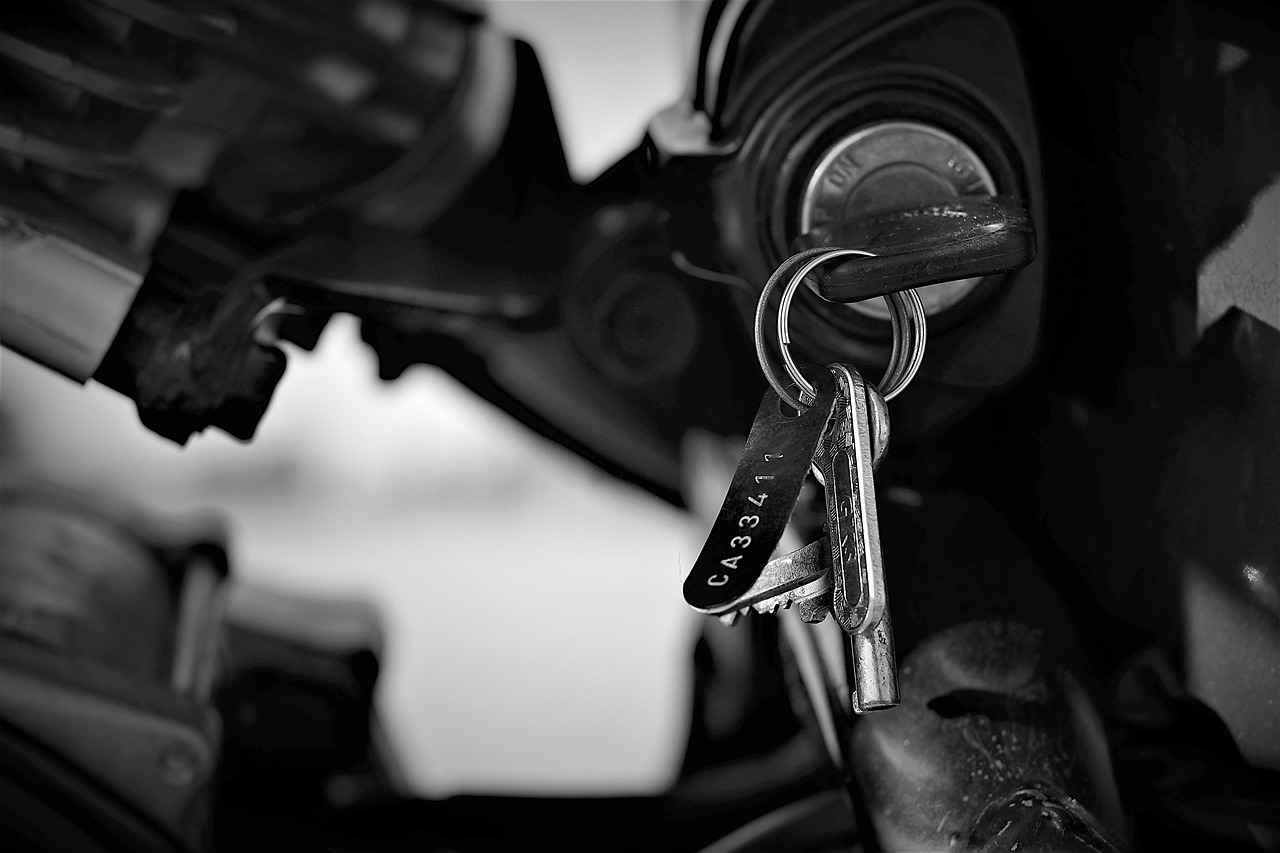This article provides a comprehensive guide on resetting the oil life indicator for a 2008 Honda Accord. Maintaining your vehicle’s oil life is crucial for optimal performance and longevity. By following the steps outlined below, you can ensure that your Honda Accord remains in excellent condition.
Why is Resetting the Oil Life Important?
Resetting the oil life indicator is essential for several reasons:
- Engine Health: Regularly monitoring and resetting the oil life helps maintain engine health, preventing premature wear and tear.
- Timely Oil Changes: This indicator serves as a reminder for timely oil changes, which are vital for the engine’s efficiency.
- Cost-Effective Maintenance: By adhering to the oil change schedule, you can avoid costly repairs down the line.
What Does the Oil Life Indicator Mean?
The oil life indicator is a sophisticated feature that calculates the remaining life of the engine oil based on driving conditions and habits. When the indicator reaches a low percentage, it signifies that the oil has degraded and needs changing.
How Often Should You Change Your Oil?
Experts recommend changing your oil every 5,000 to 7,500 miles, depending on the type of oil used and driving conditions. Regular checks can help you stay ahead of maintenance needs.
Tools Needed for Resetting Oil Life
Before you begin the reset process, ensure you have:
- Your vehicle key
- A comfortable seat inside the car
Step-by-Step Guide to Reset Oil Life
Follow these simple steps to reset the oil life indicator:
- Turn on the Ignition: Insert the key and turn it to the ON position without starting the engine. This action activates the dashboard lights.
- Access the Oil Life Menu: Use the buttons on your dashboard to navigate to the oil life menu. This will display the current oil life percentage.
- Reset the Oil Life: Press and hold the reset button until the oil life indicator flashes and resets to 100%. This confirms that the reset was successful.
Common Mistakes to Avoid
To ensure a smooth reset process, avoid these common mistakes:
- Not turning the ignition to the correct position.
- Failing to navigate to the correct menu.
- Not holding the reset button long enough.
What to Do if the Reset Doesn’t Work?
If the oil life reset fails, consider the following troubleshooting steps:
- Check for any electrical issues.
- Consult your vehicle manual for additional guidance.
- Ensure that all steps were followed correctly.
Maintaining Your Honda Accord After Resetting
After successfully resetting the oil life indicator, continue with regular maintenance practices:
- Check oil levels frequently.
- Schedule oil changes based on the indicator’s recommendations.
When to Seek Professional Help?
If you encounter persistent issues or are unsure about the reset process, it may be wise to consult a professional mechanic. They can provide expert advice and ensure your vehicle is well-maintained.
By following this guide, you can effectively reset the oil life indicator on your 2008 Honda Accord, ensuring that your vehicle remains in top condition and performs optimally for years to come.

Why Resetting Oil Life is Important?
Resetting the oil life indicator in your Honda Accord is not just a routine task; it is a critical component of vehicle maintenance that directly impacts your engine’s performance and longevity. Understanding why resetting the oil life is important can help you maintain your vehicle in optimal condition and prevent costly repairs in the future.
What Happens When You Don’t Reset the Oil Life Indicator?
When the oil life indicator is not reset after an oil change, it continues to display the old oil life percentage. This can lead to confusion, causing you to either change the oil too early or, conversely, neglecting to change it when necessary. Ignoring the oil life indicator can result in engine damage due to degraded oil, which can no longer provide adequate lubrication and protection for engine components.
How Does the Oil Life Indicator Work?
The oil life indicator is designed to assess the condition of your engine oil based on several factors, including driving habits, engine temperature, and the duration of engine operation. It uses this data to provide a percentage that reflects how much life is left in your oil. Resetting this indicator allows it to start fresh, accurately reflecting the condition of the new oil you have just added.
Benefits of Regularly Resetting the Oil Life Indicator
- Improved Engine Performance: Regular oil changes ensure that your engine operates smoothly, reducing wear and tear.
- Increased Fuel Efficiency: Clean oil reduces friction, which can lead to better fuel economy.
- Longer Engine Life: Maintaining proper oil levels and quality can significantly extend the lifespan of your engine.
What Are the Risks of Ignoring the Oil Life Reset?
Failing to reset the oil life indicator can lead to a host of problems. Over time, old oil can accumulate sludge and contaminants, which not only diminishes its lubricating properties but can also cause clogged oil passages and other engine-related issues. This neglect can culminate in expensive repairs or even engine replacement, which is a much costlier option than regular oil changes.
Is It Necessary to Reset Oil Life After Every Oil Change?
Yes, it is crucial to reset the oil life indicator after every oil change. This ensures that you are accurately informed about when your next oil change is due. By doing so, you can stay ahead of maintenance needs and avoid any potential issues that may arise from running your vehicle with old or degraded oil.
Conclusion
In summary, understanding the importance of resetting the oil life indicator in your Honda Accord is essential for maintaining your vehicle’s engine health. By ensuring timely oil changes and preventing potential engine damage, you can enjoy a smoother driving experience and extend the life of your car. Always prioritize this simple yet vital step in your vehicle maintenance routine.

What Does the Oil Life Indicator Mean?
The oil life indicator is an essential component of your vehicle’s maintenance system. It serves as a real-time gauge of the engine oil’s condition, providing crucial information to drivers about when an oil change is necessary. This indicator is not just a simple reminder; it reflects the overall health of the engine oil based on various factors, including driving habits, environmental conditions, and the type of oil used.
The oil life indicator works by monitoring the engine’s operating conditions and the oil’s performance. Every time you drive your vehicle, the oil undergoes chemical changes due to heat and contaminants. The indicator calculates the oil’s remaining life based on these factors, adjusting its readings to offer a more accurate assessment of when an oil change is needed. This means that if you drive in harsh conditions, such as extreme temperatures or heavy traffic, the oil may degrade faster, prompting an earlier notification.
Ignoring the oil life indicator can lead to severe engine damage and costly repairs. Regular oil changes are vital for maintaining optimal engine performance and longevity. By adhering to the recommendations provided by the oil life indicator, you can:
- Prevent Engine Wear: Fresh oil lubricates engine components, reducing friction and wear.
- Improve Fuel Efficiency: Clean oil helps the engine run more smoothly, which can enhance fuel economy.
- Extend Engine Life: Regular maintenance ensures that the engine remains in good working condition for a longer period.
The oil life indicator typically displays a percentage, with 100% indicating that the oil is in excellent condition and 0% suggesting that an oil change is overdue. It is crucial to act upon the indicator’s readings:
- 100%: Oil is new; no action needed. - 50%: Consider planning an oil change soon. - 25%: Schedule an oil change soon. - 0%: Immediate oil change required.
Many drivers mistakenly believe that the oil life indicator is solely based on mileage. While mileage is a factor, the indicator also considers driving conditions and habits. For instance, frequent short trips may lead to more rapid oil degradation than longer highway drives. Understanding this can help drivers make better maintenance decisions.
After changing the oil, it is essential to reset the oil life indicator to ensure accurate tracking of the oil’s condition. The reset process varies by vehicle make and model, but generally involves:
- Turning the ignition to the ON position without starting the engine.
- Navigating to the oil life menu using the dashboard buttons.
- Pressing and holding the reset button until the indicator flashes and resets.
In summary, the oil life indicator is a vital tool for maintaining your vehicle’s engine health. By understanding its functionality and paying attention to its readings, you can ensure timely oil changes and prevent potential engine issues. Regular maintenance, guided by the oil life indicator, not only enhances performance but also extends the lifespan of your vehicle.

How Often Should You Change Your Oil?
When it comes to vehicle maintenance, one of the most critical aspects is ensuring that your engine oil is changed regularly. This practice is vital for the longevity and performance of your vehicle. In this section, we will delve into the question of how often should you change your oil, providing insights and recommendations based on expert advice.
Regular oil changes are essential for several reasons:
- Engine Protection: Fresh oil lubricates engine components, reducing friction and wear.
- Optimal Performance: Clean oil helps maintain engine efficiency, leading to better fuel economy.
- Preventing Overheating: Oil dissipates heat, preventing the engine from overheating.
- Longer Lifespan: Consistent oil changes can extend the life of your engine significantly.
The frequency of oil changes can vary based on several factors:
- Driving Conditions: Frequent short trips, stop-and-go traffic, and extreme temperatures can necessitate more frequent changes.
- Oil Type: Synthetic oils generally last longer than conventional oils, allowing for extended intervals between changes.
- Vehicle Age: Older vehicles may require more frequent oil changes due to wear and tear.
- Manufacturer Recommendations: Always refer to your vehicle’s owner manual for specific guidelines.
Most automotive experts suggest changing your oil every 5,000 to 7,500 miles. However, this can vary based on the factors mentioned above. For instance:
- If you drive in harsh conditions (e.g., extreme heat or cold), consider changing your oil closer to the 5,000-mile mark.
- If you use synthetic oil, you might stretch the interval to 7,500 miles or even longer, depending on your vehicle’s specifications.
Most modern vehicles come equipped with an oil life monitoring system. This system calculates the oil’s condition based on driving habits and alerts you when it’s time for a change. Regularly checking your oil level and condition is also crucial:
- Check Oil Level: Use the dipstick to ensure your oil level is adequate.
- Inspect Oil Condition: If the oil appears dark and gritty, it’s time for a change.
Neglecting regular oil changes can lead to severe consequences:
- Engine Damage: Old oil loses its lubricating properties, leading to increased friction and potential engine failure.
- Sludge Buildup: Dirty oil can form sludge, clogging oil passages and reducing engine efficiency.
- Higher Repair Costs: Ignoring oil changes can result in costly repairs or even engine replacement.
In summary, understanding how often to change your oil is crucial for maintaining your vehicle’s health. By adhering to recommended intervals and monitoring your oil condition, you can ensure a smooth and efficient driving experience. Regular oil changes not only protect your engine but also enhance your vehicle’s performance and longevity.

Tools Needed for Resetting Oil Life
When it comes to maintaining your vehicle, particularly a 2008 Honda Accord, understanding the process of resetting the oil life indicator is crucial. This task not only ensures that your vehicle runs smoothly but also helps in prolonging the life of the engine. One of the first steps in this process is to gather the necessary tools and prepare yourself adequately.
Before diving into the reset procedure, it is essential to ensure you have the right tools and are in the proper position to execute the reset accurately. Here’s a detailed list of what you need:
- Vehicle Key: Ensure you have the vehicle key on hand. This is necessary to turn on the ignition without starting the engine.
- Owner’s Manual: Having the owner’s manual can provide additional guidance and troubleshooting steps if needed.
- Comfortable Seating: Make sure you are seated comfortably in the driver’s seat, as you will need to access various buttons and controls on the dashboard.
- Time: Setting aside a few minutes will help you perform the reset procedure without feeling rushed.
Preparation is key when resetting the oil life indicator. By gathering the necessary tools and ensuring you are seated inside the vehicle, you set yourself up for success. This preparation allows you to follow the reset procedure accurately, minimizing the risk of errors that could lead to incorrect readings or the need to repeat the process.
Before you begin the reset process, follow these steps:
- Check Oil Level: Before resetting the indicator, it’s wise to check the oil level. This ensures that you are not resetting the indicator prematurely, which could lead to engine damage if the oil is low.
- Turn Off Accessories: Make sure all accessories and lights are turned off to avoid draining the battery during the reset process.
- Familiarize Yourself with the Dashboard: Take a moment to familiarize yourself with the dashboard controls. This will make the process smoother and more efficient.
Once you have gathered your tools and prepared yourself, you can confidently proceed with the reset procedure. Remember that following the steps accurately is vital for the successful reset of the oil life indicator.
In conclusion, preparing adequately for the oil life reset in your 2008 Honda Accord can save you time and ensure your vehicle remains in optimal condition. By following the steps outlined above and using the right tools, you can ensure that your vehicle maintenance is up to date, ultimately leading to better performance and longevity.

Step-by-Step Guide to Reset Oil Life
Resetting the oil life indicator on your Honda Accord is a crucial maintenance task that ensures your vehicle stays in optimal condition. This step-by-step guide will help you reset the oil life indicator efficiently, ensuring that your vehicle maintenance reminders are accurate and up to date.
Step 1: Turn on the Ignition
Begin by inserting your key into the ignition and turning it to the ON position. This action activates the dashboard lights and systems without starting the engine. It’s essential to have the ignition on to access the necessary menus.
Step 2: Access the Oil Life Menu
Using the buttons on your dashboard, navigate to the oil life menu. This menu will display the current oil life percentage, which indicates how much life is left in your engine oil. Understanding this percentage is vital for maintaining your vehicle’s performance.
Step 3: Reset the Oil Life
Once you have accessed the oil life menu, locate the reset button. Press and hold this button until the oil life indicator flashes. Once it resets to 100%, you will know that the procedure was successful. This step is crucial as it ensures that your vehicle’s maintenance schedule reflects the new oil change.
Resetting the oil life indicator is important for several reasons:
- Engine Health: Regularly resetting the indicator helps maintain your Honda Accord’s engine health by ensuring timely oil changes.
- Accurate Reminders: It provides accurate reminders for maintenance, preventing potential engine damage due to neglected oil changes.
- Cost-Effective: By keeping track of your oil life, you can avoid costly repairs caused by using old or degraded oil.
When resetting the oil life indicator, be mindful of these common mistakes:
- Not Following Steps: Skipping steps can lead to an unsuccessful reset, so ensure you follow each step carefully.
- Ignoring Dashboard Alerts: Always pay attention to dashboard alerts regarding oil changes; they are designed to help you maintain your vehicle.
- Resetting Too Early: Resetting the oil life indicator before an oil change can lead to confusion and mismanagement of maintenance schedules.
If you find that the reset procedure does not work, consider the following troubleshooting steps:
- Check Electrical Connections: Ensure that there are no electrical issues with the dashboard or ignition system.
- Consult the Vehicle Manual: Refer to your Honda Accord’s manual for specific instructions tailored to your model.
- Seek Professional Help: If all else fails, consult a professional mechanic for assistance.
After successfully resetting the oil life indicator, it’s essential to continue regular maintenance practices. This includes:
- Regular Oil Checks: Periodically check your oil levels to ensure they are adequate.
- Scheduled Oil Changes: Stick to a schedule for oil changes, typically every 5,000 to 7,500 miles depending on driving conditions.
By following these steps and guidelines, you can ensure that your Honda Accord remains in excellent condition, maximizing its performance and longevity.
Step 1: Turn on the Ignition
When it comes to maintaining your 2008 Honda Accord, one of the essential tasks is resetting the oil life indicator. This process ensures that your vehicle’s maintenance reminders are accurate, promoting optimal engine performance. In this section, we will detail the first step of the reset process.
To begin the reset process, you need to turn the ignition key to the ON position without starting the engine. This action activates the dashboard lights and systems, allowing you to access the oil life menu. Here’s how to do it:
- Ensure that you are seated comfortably inside your Honda Accord.
- Insert the ignition key into the ignition slot.
- Turn the key to the ON position, which is typically the second position in the ignition switch.
At this point, you will notice that the dashboard lights illuminate. This indicates that the vehicle’s electrical systems are operational, and you’re ready to proceed with the next steps in the reset process. It’s important to note that you should not start the engine during this step; simply turning the key to the ON position is sufficient.
Why is this step crucial? By activating the dashboard, you ensure that the vehicle’s computer system is ready to receive your commands for resetting the oil life indicator. This initial action sets the stage for a successful reset, helping maintain your Honda Accord’s engine health and performance.
After completing this step, you can move on to the next part of the reset process, which involves accessing the oil life menu. Remember, following each step carefully is vital to achieving the desired outcome without any complications.
In summary, turning the ignition key to the ON position is a simple yet essential step in the oil life reset process for your 2008 Honda Accord. By ensuring that the dashboard is activated, you pave the way for a smooth and efficient reset, ultimately contributing to the longevity and reliability of your vehicle.
ON
How to Reset Oil Life Honda Accord 2008
This article provides a step-by-step guide on how to reset the oil life indicator on a 2008 Honda Accord, ensuring optimal vehicle maintenance and performance.
Why Resetting Oil Life is Important?
Understanding the significance of resetting the oil life indicator helps maintain your Honda Accord’s engine health, ensuring timely oil changes and preventing potential engine damage.
What Does the Oil Life Indicator Mean?
The oil life indicator is a crucial feature that notifies drivers when it’s time for an oil change, reflecting the condition of the engine oil based on driving habits and conditions.
How Often Should You Change Your Oil?
Regular oil changes are essential for vehicle longevity. Most experts recommend changing your oil every 5,000 to 7,500 miles, depending on driving conditions and oil type.
Tools Needed for Resetting Oil Life
- Vehicle key
- Owner’s manual (optional)
- Comfortable seating position
Step-by-Step Guide to Reset Oil Life
Resetting the oil life indicator involves a few simple steps that can be performed in minutes, ensuring that your vehicle maintenance reminders are accurate and up to date.
Step 1: Turn on the IgnitionBegin the reset process by turning the ignition key to the ON position without starting the engine, activating the dashboard lights and systems.Step 2: Access the Oil Life MenuNavigate to the oil life menu using the buttons on the dashboard, allowing you to view the current oil life percentage before proceeding with the reset.Step 3: Reset the Oil LifePress and hold the reset button until the oil life indicator flashes and resets to 100%, confirming that the procedure was successful.
Common Mistakes to Avoid
Avoiding common mistakes during the reset process can save time and ensure that the oil life indicator functions correctly after the reset. Some common mistakes include:
- Not turning the ignition to the ON position
- Failing to navigate to the correct menu
- Not holding the reset button long enough
What to Do if the Reset Doesn’t Work?
If the oil life reset fails, troubleshooting steps may be necessary, such as:
- Checking for any electrical issues
- Consulting the vehicle manual for additional guidance
- Ensuring the battery is functioning properly
Maintaining Your Honda Accord After Resetting
After resetting the oil life, continue regular maintenance practices, such as:
- Checking oil levels regularly
- Scheduling timely oil changes
- Monitoring engine performance for any unusual signs
When to Seek Professional Help?
If you’re unsure about the reset process or encounter persistent issues, it may be best to consult a professional mechanic for assistance and advice on maintaining your vehicle. They can provide expert insights tailored to your specific model and driving habits.
position without starting the engine, activating the dashboard lights and systems.
How to Reset Oil Life Honda Accord 2008
This article provides a step-by-step guide on how to reset the oil life indicator on a 2008 Honda Accord, ensuring optimal vehicle maintenance and performance.
Why Resetting Oil Life is Important?
Understanding the significance of resetting the oil life indicator helps maintain your Honda Accord’s engine health, ensuring timely oil changes and preventing potential engine damage.
What Does the Oil Life Indicator Mean?
The oil life indicator is a crucial feature that notifies drivers when it’s time for an oil change, reflecting the condition of the engine oil based on driving habits and conditions.
How Often Should You Change Your Oil?
Regular oil changes are essential for vehicle longevity. Most experts recommend changing your oil every 5,000 to 7,500 miles, depending on driving conditions and oil type.
Tools Needed for Resetting Oil Life
- Vehicle key
- Seated inside the car
Before resetting the oil life indicator, ensure you have the vehicle key and are seated inside the car, ready to follow the reset procedure accurately.
Step-by-Step Guide to Reset Oil Life
Resetting the oil life indicator involves a few simple steps that can be performed in minutes, ensuring that your vehicle maintenance reminders are accurate and up to date.
Step 1: Turn on the IgnitionBegin the reset process by turning the ignition key to the ON position without starting the engine, activating the dashboard lights and systems.Step 2: Access the Oil Life MenuNavigate to the oil life menu using the buttons on the dashboard, allowing you to view the current oil life percentage before proceeding with the reset.Step 3: Reset the Oil LifePress and hold the reset button until the oil life indicator flashes and resets to 100%, confirming that the procedure was successful.
Common Mistakes to Avoid
- Not turning the ignition to the ON position
- Failing to access the oil life menu correctly
- Not holding the reset button long enough
Avoiding common mistakes during the reset process can save time and ensure that the oil life indicator functions correctly after the reset.
What to Do if the Reset Doesn’t Work?
If the oil life reset fails, troubleshooting steps may be necessary, such as checking for any electrical issues or consulting the vehicle manual for additional guidance.
Maintaining Your Honda Accord After Resetting
After resetting the oil life, continue regular maintenance practices, such as checking oil levels and scheduling timely oil changes to ensure your Honda Accord runs smoothly.
When to Seek Professional Help?
If you’re unsure about the reset process or encounter persistent issues, it may be best to consult a professional mechanic for assistance and advice on maintaining your vehicle.
Step 2: Access the Oil Life Menu
Accessing the oil life menu in your 2008 Honda Accord is a crucial step in maintaining your vehicle’s performance and longevity. This feature allows you to monitor the current condition of your engine oil and ensures that you are aware of when an oil change is necessary. In this section, we will explore the process of navigating to the oil life menu effectively.
To begin, make sure that the vehicle is in the ON position without starting the engine. This can be done by turning the ignition key or pressing the start button, depending on your model. Once the dashboard lights illuminate, you are ready to proceed.
Utilize the buttons located on your dashboard to navigate through the menu options. Typically, these buttons include the trip and reset buttons, which allow you to cycle through various displays. Follow these steps:
- Press the trip button repeatedly until you see the oil life percentage displayed on the screen.
- Take note of the current oil life percentage, which indicates how much life remains in your engine oil.
The oil life percentage displayed is a reflection of your engine oil’s condition, calculated based on your driving habits and the vehicle’s operating conditions. A reading of 100% means that the oil is fresh, while a lower percentage indicates that an oil change is needed soon. It is essential to monitor this percentage regularly to avoid potential engine damage.
Regularly checking your oil life can help prevent engine wear and tear, ensuring that your vehicle runs smoothly. Moreover, it allows you to plan for oil changes, which are vital for maintaining optimal engine performance and efficiency. Ignoring oil life indicators can lead to increased engine friction, overheating, and ultimately, costly repairs.
Once you have accessed the oil life menu and noted the percentage, you can proceed to reset the oil life indicator if you have just changed the oil. This ensures that the system accurately reflects the new oil’s condition. Following the reset, continue to monitor the oil life percentage regularly to maintain your vehicle’s health.
In summary, accessing the oil life menu is a straightforward process that plays a significant role in vehicle maintenance. By understanding how to navigate this feature, you can ensure that your Honda Accord remains in excellent condition, ultimately enhancing its performance and longevity.
Step 3: Reset the Oil Life
In this section, we will delve into the crucial step of resetting the oil life indicator for your 2008 Honda Accord. This process, while straightforward, requires careful attention to ensure that it is completed successfully. By following the steps outlined below, you can maintain your vehicle’s performance and ensure that your oil change reminders are accurate.
Resetting the oil life indicator is essential for keeping track of your vehicle’s maintenance schedule. It reflects the condition of your engine oil, and resetting it helps you stay on top of necessary oil changes. Here’s how to do it:
To reset the oil life indicator, follow these detailed instructions:
- Press and Hold the Reset Button: Locate the reset button on your dashboard. This button is often labeled as “Reset” and is usually found near the oil life indicator display.
- Wait for the Indicator to Flash: Press and hold the reset button for a few seconds. You should see the oil life indicator begin to flash. This flashing signifies that the system is in reset mode.
- Confirmation of Reset: Continue to hold the button until the oil life indicator resets to 100%. This change confirms that the reset procedure has been successful.
It’s important to ensure that you do not release the button too early; doing so may result in an incomplete reset, which could lead to inaccurate oil life readings. If the indicator does not reset, repeat the process to ensure that the procedure has been executed correctly.
Resetting your oil life indicator after an oil change is vital for several reasons:
- Accurate Maintenance Tracking: It allows you to track when your next oil change is due based on your driving habits.
- Engine Health: Regular oil changes and accurate tracking help maintain the health of your engine, preventing potential damage.
- Enhanced Performance: Keeping your oil life indicator accurate ensures that your vehicle runs smoothly and efficiently.
While resetting the oil life indicator is generally a simple task, there are common issues that may arise:
- Indicator Not Flashing: If the oil life indicator does not flash after holding the reset button, check to ensure that you are pressing the correct button and holding it long enough.
- Indicator Not Resetting: If the oil life does not change to 100%, try the process again, ensuring that all steps are followed correctly.
If you encounter persistent issues with resetting the oil life indicator, consider the following steps:
- Consult the Owner’s Manual: Your vehicle’s manual may provide specific instructions or troubleshooting tips.
- Check for Electrical Issues: Ensure there are no underlying electrical problems affecting the dashboard display.
- Seek Professional Assistance: If you’re unsure or unable to resolve the issue, visiting a qualified mechanic can provide expert insights and solutions.
By following these steps and understanding the importance of resetting your oil life indicator, you can ensure that your 2008 Honda Accord remains in optimal condition. Regular maintenance and attention to these details will contribute to the longevity and performance of your vehicle.
Common Mistakes to Avoid
When it comes to maintaining your 2008 Honda Accord, one crucial aspect is ensuring that the oil life indicator functions properly after a reset. Avoiding common mistakes during the reset process can save you both time and frustration, while also ensuring that your vehicle’s maintenance reminders are accurate. Here are some common pitfalls to watch out for:
- Skipping the Preliminary Steps: Before you begin the reset process, make sure the vehicle is parked on a level surface and the engine is off. Failing to do so can lead to incorrect readings.
- Not Checking the Oil Life Percentage: Always check the current oil life percentage before attempting a reset. This will help you understand how much oil life remains and whether an oil change is actually needed.
- Incorrectly Following the Reset Procedure: Each step in the reset process is essential. Skipping or misinterpreting any step can result in the oil life indicator not resetting correctly. Make sure to follow the manufacturer’s instructions carefully.
- Resetting Without Changing the Oil: One of the biggest mistakes is resetting the oil life indicator without actually changing the oil. This can lead to serious engine issues down the line, as the indicator is designed to reflect the condition of the oil.
- Ignoring Warning Lights: If the oil life indicator does not reset or if any warning lights remain illuminated after the reset, do not ignore them. This could indicate a more serious issue that requires professional attention.
By being aware of these common mistakes, you can ensure that the reset process goes smoothly and that your oil life indicator functions correctly. This not only helps in maintaining your vehicle’s performance but also extends its lifespan.
In addition to avoiding mistakes during the reset, it’s vital to establish a regular maintenance routine. Regular oil changes, based on your driving habits and conditions, will keep your engine running smoothly and efficiently. Most experts recommend changing your oil every 5,000 to 7,500 miles, but this can vary based on factors such as oil type and driving conditions.
Lastly, if you find that the reset process is consistently problematic, it may be wise to consult your vehicle manual or seek assistance from a qualified mechanic. They can provide insights tailored to your specific situation and help address any underlying issues that may be affecting your Honda Accord’s performance.
What to Do if the Reset Doesn’t Work?
When attempting to reset the oil life indicator on your 2008 Honda Accord, you may encounter situations where the reset process does not work as expected. This can be frustrating, especially if you are keen on maintaining your vehicle’s performance. Understanding the potential reasons behind a failed reset and knowing how to troubleshoot can save you time and ensure your vehicle stays in optimal condition.
There are several factors that could lead to a failed oil life reset. Electrical issues are among the most common culprits. A weak battery or faulty wiring can prevent the reset procedure from functioning correctly. Additionally, if the vehicle’s computer system is experiencing glitches or has not been updated, this may also interfere with the reset process.
Before diving into more complex troubleshooting, it is advisable to first check the basic electrical connections. Ensure that:
- The vehicle battery is fully charged and in good condition.
- All fuses related to the dashboard and electrical systems are intact.
- There are no visible signs of corrosion or damage to the wiring.
If any issues are found, addressing them may resolve the reset problem.
Your vehicle manual is a valuable resource that provides specific guidance tailored to your Honda Accord. If the reset fails, refer to the troubleshooting section of the manual. It may contain detailed instructions or alternative methods for resetting the oil life indicator, which can be particularly useful if you are unfamiliar with the process.
Ensure that you are following the correct reset procedure. Sometimes, a simple oversight can lead to failure. Double-check the steps outlined in the manual and ensure that:
- You are in the correct mode on the dashboard.
- You are holding the reset button for the appropriate duration.
It is crucial to perform the steps accurately to ensure the reset is successful.
If you have gone through the troubleshooting steps and the reset still fails, it may be time to consult a professional mechanic. They have the tools and expertise to diagnose more complex issues that could be affecting the oil life reset. Additionally, they can check for any underlying problems with your vehicle’s computer system.
Once you successfully reset the oil life indicator, it is essential to maintain regular checks on your vehicle’s oil levels and overall health. Keeping track of these aspects can help prevent future issues. Schedule timely oil changes and monitor your vehicle’s performance to ensure it runs smoothly.
In summary, if the oil life reset on your Honda Accord does not work, start by checking electrical connections, consulting the vehicle manual, and ensuring you are following the correct procedure. If issues persist, seeking professional assistance is advisable. By staying proactive with your vehicle maintenance, you can ensure a longer lifespan and optimal performance for your Honda Accord.

Maintaining Your Honda Accord After Resetting
After successfully resetting the oil life indicator on your Honda Accord, it is crucial to implement a consistent maintenance routine. This ensures that your vehicle remains in optimal condition and prevents any potential issues down the road. Here are some essential practices to follow:
- Regularly Check Oil Levels: Make it a habit to check your oil levels at least once a month. This simple task can help you identify any leaks or consumption issues before they escalate. To check the oil level, use the dipstick, ensuring the vehicle is on a level surface and the engine is cool.
- Schedule Timely Oil Changes: While the oil life indicator provides a guideline, it is still important to adhere to a regular oil change schedule. Most experts recommend changing the oil every 5,000 to 7,500 miles, depending on your driving habits and the type of oil used. If you often drive in severe conditions, such as extreme temperatures or stop-and-go traffic, consider changing the oil more frequently.
- Monitor Engine Performance: Pay attention to how your Honda Accord performs. Unusual noises, changes in acceleration, or dashboard warning lights may indicate that something is amiss. Addressing these issues promptly can save you from more significant repairs later.
- Inspect Other Fluids: In addition to engine oil, regularly check other vital fluids, such as coolant, brake fluid, and transmission fluid. Keeping these levels topped off is essential for overall vehicle health.
- Maintain Tire Health: Regularly inspect your tires for proper inflation and tread wear. Keeping tires properly inflated not only improves fuel efficiency but also enhances safety and handling.
- Follow a Maintenance Schedule: Refer to your Honda Accord’s owner manual for a comprehensive maintenance schedule. This guide outlines when various services should be performed, including air filter replacements, brake inspections, and more.
Incorporating these practices into your routine will not only help keep your Honda Accord running smoothly but also extend its lifespan. Remember, preventive maintenance is key to avoiding costly repairs and ensuring the safety and reliability of your vehicle.
Moreover, consider using high-quality oil and filters during changes. Investing in reputable products can significantly impact your engine’s performance and longevity. It’s also wise to keep a maintenance log, documenting all services performed. This not only helps you keep track of what needs to be done but can also be beneficial if you decide to sell your vehicle in the future.
Finally, if you ever feel uncertain about any aspect of your vehicle’s maintenance, do not hesitate to seek professional help. A certified mechanic can provide valuable insights and assistance, ensuring that your Honda Accord remains in top-notch condition.

When to Seek Professional Help?
When it comes to vehicle maintenance, particularly with a model like the 2008 Honda Accord, understanding when to seek professional help is crucial for maintaining optimal performance and safety. While many routine tasks can be performed by car owners, certain situations warrant the expertise of a qualified mechanic.
It’s important to be aware of warning signs that indicate your vehicle may need professional attention. If you notice any of the following symptoms, it’s advisable to consult a mechanic:
- Unusual Noises: Sounds such as grinding, knocking, or squealing can indicate serious issues.
- Warning Lights: Dashboard alerts, especially those related to the engine or oil pressure, should never be ignored.
- Fluid Leaks: Puddles of oil or other fluids under your vehicle can signify leaks that require immediate attention.
- Decreased Performance: If your vehicle is sluggish or unresponsive, it may be time for a professional evaluation.
Some repairs are beyond the scope of an average car owner. If you encounter issues with the engine, transmission, or electrical systems, these often require specialized tools and knowledge. Mechanics have access to diagnostic equipment that can accurately pinpoint problems, saving you time and potential further damage.
If you’ve attempted to reset the oil life indicator and it hasn’t worked, don’t hesitate to seek help. A professional can assess whether the issue lies with the reset procedure or if there are underlying electrical problems. Consulting an expert ensures that your vehicle’s maintenance reminders are accurate and reliable.
Even if you are comfortable performing basic maintenance tasks, regular check-ups by a professional are essential. Mechanics can provide comprehensive inspections that cover areas you might overlook, such as:
- Brake Systems: Ensuring your brakes are functioning properly is vital for safety.
- Suspension and Steering: These systems can wear over time and affect vehicle handling.
- Fluid Levels: Mechanics can check and replenish vital fluids that keep your vehicle running smoothly.
If you’re ever in doubt about your vehicle’s performance or maintenance needs, consulting a professional mechanic is wise. They can provide tailored advice based on your driving habits and local conditions. This personalized guidance can help you avoid costly repairs down the line and ensure your Honda Accord remains in peak condition.
While many car owners enjoy tackling maintenance tasks themselves, there are times when DIY efforts may not be sufficient. If you’ve tried troubleshooting an issue without success, or if the problem seems to be escalating, it’s best to seek professional assistance. Mechanics have the experience and training to handle complex issues that could otherwise lead to significant vehicle damage.
In summary, knowing when to seek professional help for your Honda Accord can save you time, money, and frustration. By paying attention to your vehicle’s performance and recognizing the signs that indicate professional intervention is needed, you can maintain your vehicle’s health and longevity.

Frequently Asked Questions
- How do I know when to reset the oil life indicator?
You’ll want to reset the oil life indicator after every oil change. This ensures that the indicator accurately reflects the condition of your engine oil, helping you keep track of when your next oil change is due.
- What happens if I don’t reset the oil life indicator?
If you skip resetting the oil life indicator, it may give you incorrect notifications about oil changes. This could lead to either changing your oil too late or too early, which can affect your engine’s performance and longevity.
- Can I reset the oil life indicator without starting the engine?
Absolutely! You only need to turn the ignition to the ON position without starting the engine to access the oil life menu and perform the reset. It’s a quick and simple process!
- What should I do if the oil life reset doesn’t work?
If the reset fails, double-check that you’re following the steps correctly. If it still doesn’t reset, there might be an electrical issue, and consulting your vehicle manual or a professional mechanic could be the best next step.
- How often should I change my oil?
Most experts recommend changing your oil every 5,000 to 7,500 miles. However, this can vary based on your driving habits and the type of oil you use, so always refer to your owner’s manual for the best advice.



